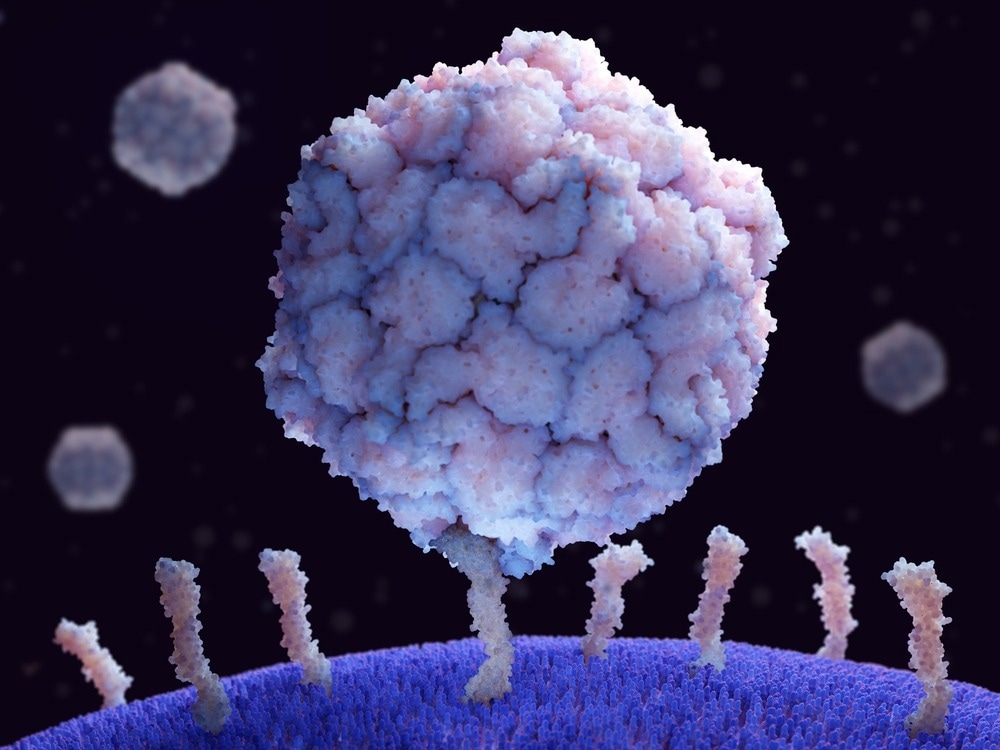In a recent study published in the journal Eurosurveillance, researchers detected wild poliovirus type 3 (WPV3) during the environmental surveillance of poliovirus essential facilities (PEFs) in the Netherlands.

Study: Wild poliovirus type 3 (WPV3)-shedding event following detection in environmental surveillance of poliovirus essential facilities, the Netherlands, November 2022 to January 2023. Image Credit: Juan Gaertner / Shutterstock.com
About the study
Environmental surveillance of all PEFs in the Netherlands was implemented to identify possible containment breaches. As a result, the WPV3 Saukett G strain was isolated from a sewage sample on November 15, 2022, by the National Polio Laboratory. Soon after, a prompt response to trace possible WPV3 shedding was essential to mitigate the risk.
In the present study, researchers describe the identification, isolation, and surveillance of WPV3 shedding. The national authority for containment of poliovirus (NAC) ordered routine environmental surveillance of PEFs since 2020. Wastewater samples from polio diagnostic labs, toilets, and vaccine production facilities were collected.
Study findings
Sewage samples were obtained every three weeks in 2022. Seventy-four PEF samples were analyzed, all of which tested negative for infectious polovirus, except for one sample.
The positive sample yielded two isolates. Genome sequencing subsequently revealed that the isolates were WPV3-Saukett G strains with two and three mutations relative to the vaccine stocks.
Follow-up samples from the same site were negative. Mutations in the two isolates suggested human shedding, rather than a breach from the PEF.
Serum and stool samples were collected from 51 employees with access to WPV3. Stool specimens were assessed using in-house reverse-transcription polymerase chain reaction (RT-PCR) assays for enterovirus or WPV3 detection.
PEF employees were vaccinated, while one exhibited a serologic response to infection. Stool specimens from this individual tested positive for enterovirus and WPV3, with the remaining stool samples testing negative. The infected employee was asked to isolate at a PEF residence under the supervision of public health service.
The infected employee was allowed walk, exercise, and meet outsiders while avoiding physical contact but was prohibited from receiving guests within the isolation residence. The infected individual was provided psychological support during isolation. Isolation ended after 33 days when three successive stool specimens tested negative.
A throat swab was obtained during isolation when the virus load in the stool sample increased on December 13, 2022. This sample tested negative for WPV3/enterovirus, thus implying that oral transmission was unlikely and stringent hygiene measures could prevent secondary transmission.
The genomes of isolates from sewage and stool specimens were not identical, although one substitution (C3082T) was shared. This suggested that the infected employee was the likely source of the sewage isolate.
PEF and local health service began contact tracing after identifying the infected employee. Specifically, close contacts and others sharing the same toilet space were identified. In total, 54 stool samples from 27 contacts tested negative for WPV3.
Conclusions
In summary, the researchers described an asymptomatic infection of WPV3 in a vaccinated employee after detecting the virus through environmental surveillance of Dutch PEFs. WPV detection in sewage indicated a containment breach, which triggered a response to identify the virus-shedding employee.
There were no indications of ongoing transmission and swab samples from the infected individual were negative. Thus, stringent hygiene measures were sufficient for risk mitigation.
The study findings demonstrate that environmental surveillance could prove valuable when containment breaches and infection remain unnoticed.
Journal reference:
- Duizer, E., Ruijs, W. L., Hintaran, A. D. P.,, et al. (2023). Wild poliovirus type 3 (WPV3)-shedding event following detection in environmental surveillance of poliovirus essential facilities, the Netherlands, November 2022 to January 2023. Eurosurveillance. doi:10.2807/1560-7917.ES.2023.28.5.2300049